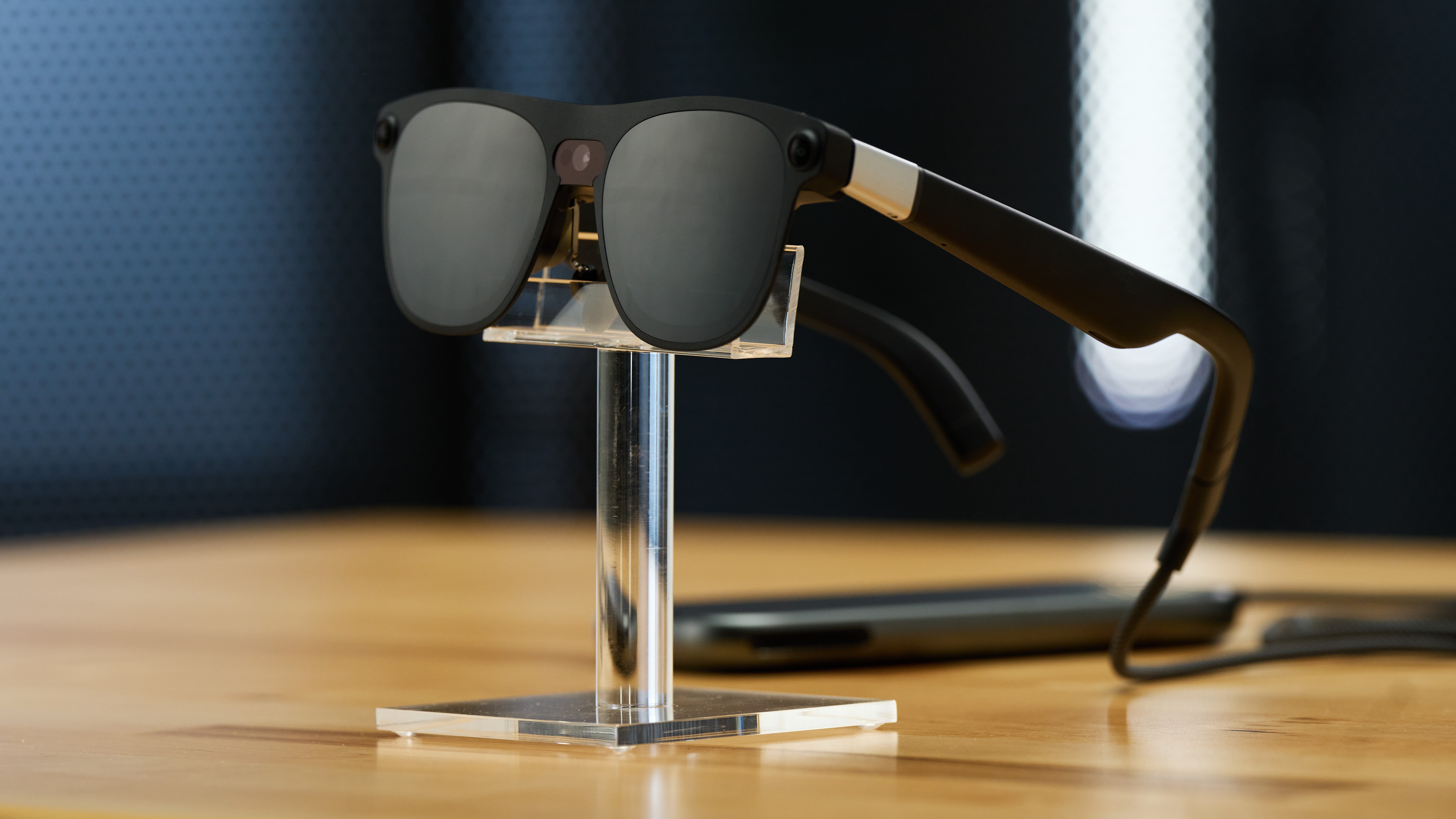POCO F1 review: Incredible performance at an unbeatable price
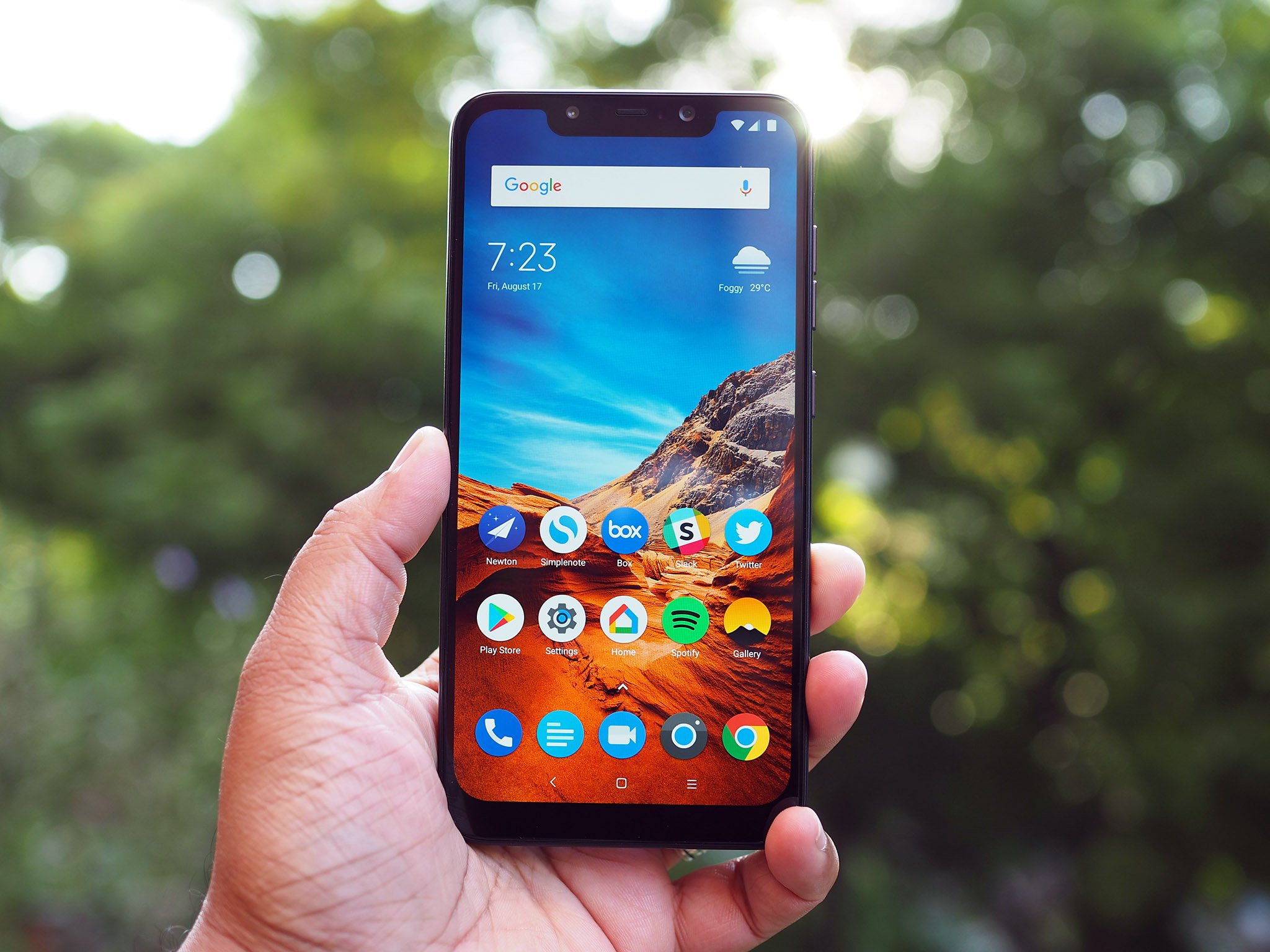
Xiaomi has done a magnificent job carving out a name for itself in the smartphone segment. The manufacturer continues to be the largest handset maker in India, no mean feat considering the Indian market is one of the most competitive in the world.
A large part of Xiaomi's success in India has to do with impressive numbers in the budget segment, where Xiaomi dominates. The Redmi and Redmi Note series make up a huge chunk of sales for the brand, and an unfortunate side effect of that budget-focused push is that Xiaomi is now perceived as a budget brand. Even a device like the Mi A2 — which retails for ₹16,999 ($250) in India — is a hard sell when a majority of Xiaomi's phones sell for ₹10,000 ($150) or less.
That's one of the main reasons why Xiaomi doesn't launch its flagships in the country. The Mi Mix 2 was the exception to the rule, but the phone did little to sway customers looking to pick up a OnePlus 5T.
Xiaomi is once again making its foray into the mid-range segment, but this time it's taking a different route. Instead of bringing the Mi 8 or the Mi Mix 2S to India, the Chinese manufacturer has created a sub-brand called POCO, which gives it the ability to start afresh in this category.
The POCO sub-brand is helmed by Xiaomi's Lead Product Manager Jai Mani, who has been integral to Xiaomi's growth in India over the years. Xiaomi is trying to attract a younger audience with POCO, and it's clear from the marketing spiel that the focus will be on speed. Furthermore, the POCO brand will primarily cater to a global audience, and to that effect, the POCO F1 won't be launching in China. The device — and subsequent phones that follow — will be unveiled in India and other global markets.
The brand isn't trying to hide the fact that it's a part of Xiaomi — the branding at the bottom of the phone says "POCO by Xiaomi", and POCO will leverage Xiaomi's existing after-sales network. Now that we have a better idea of what POCO is about, it's time to take a look at the device itself.
Pros:
Get the latest news from Android Central, your trusted companion in the world of Android
- Unmatched value
- Rugged design
- Top-notch performance
- Outstanding battery life
Cons:
- Average camera
- No water resistance
About this review
I (Harish Jonnalagadda) am writing this review after using the POCO F1 in New Delhi and Hyderabad, India for seven days. The phone was running MIUI 9.6 (9.6.11.0) based on Android 8.1 Oreo and hasn't received any updates over the course of the review. The unit was provided to Android Central for review by Xiaomi.
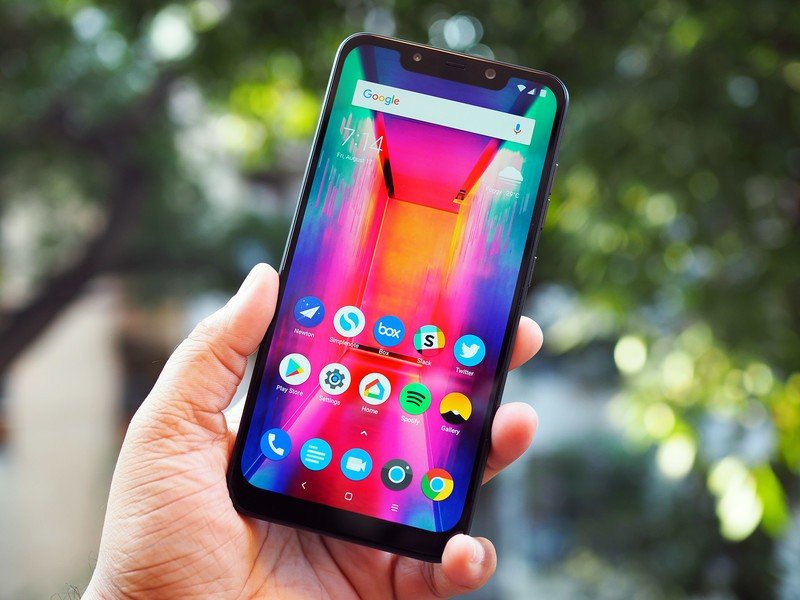
POCO F1 Hardware
While the POCO F1 is using an identical panel as the Mi 8 series, it doesn't share any design similarities at the back as the phone comes with a polycarbonate chassis instead of a glass finish. However, the F1 shares one key attribute that made Xiaomi phones stand out over the years: value for money. The POCO F1 will be sold in three variants, and all three options — including the one with 8GB of RAM and 256GB of storage — will be available for under ₹30,000.
The model with 6GB of RAM and 64GB of storage will retail for ₹20,999 ($300), the variant with 6GB of RAM and 128GB of storage will be available for ₹23,999 ($345), and the high-end option with 8GB of RAM and 256GB of storage will go on sale in the market for ₹28,999 ($415). Then there's an Armored Edition with a kevlar back and 8GB/256GB for ₹29,999 ($430). Xiaomi is offering LPDDR4X RAM and UFS 2.1 flash memory as standard on all three variants.
POCO is taking aggressive pricing to a whole new level.
So if you're looking to get your hands on the Snapdragon 845 on a budget, the POCO F1 is virtually unchallenged. ASUS' ZenFone 5Z also offers similar hardware, but even that particular device costs ₹29,999 ($430). To put things into context, the OnePlus 6 starts off at ₹34,999 ($500), making it seem expensive by comparison.
Simply put, the POCO F1 is the most affordable phone to feature the Snapdragon 845, and that isn't likely to change anytime soon.
Coming to the design side of things, the POCO F1 deviates from the mold with a polycarbonate back. We haven't seen many polycarbonate designs in recent years — the budget segment has moved to metal, and the mid-range category is full of glass-backed phones. The POCO F1 doesn't look premium by any stretch of the imagination, but what it lacks in looks it makes up for in durability.
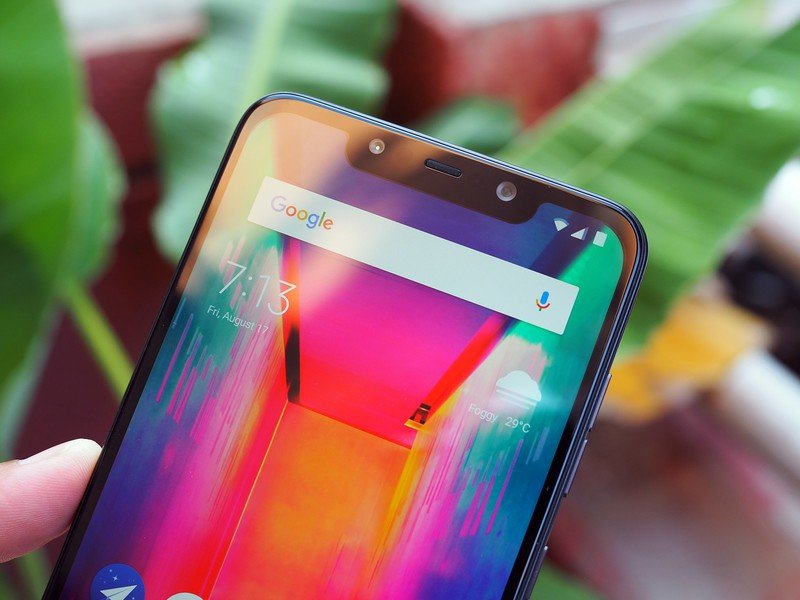
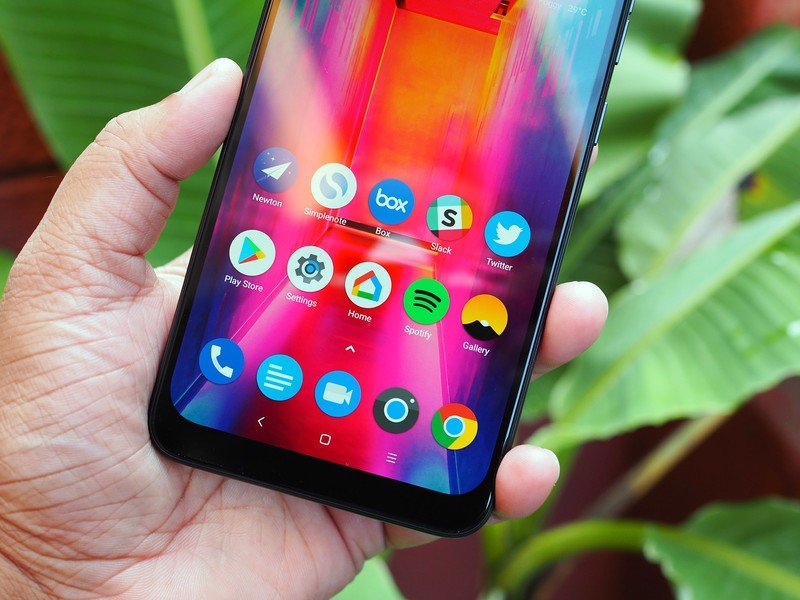

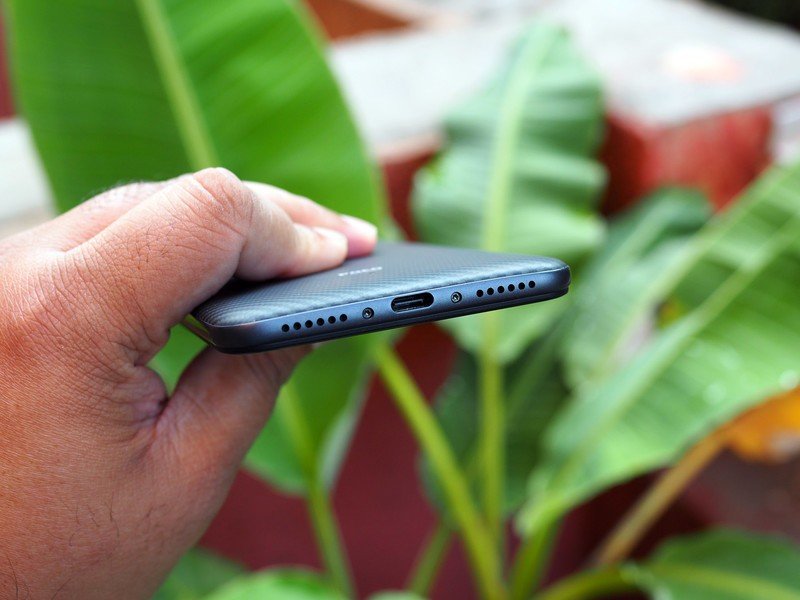
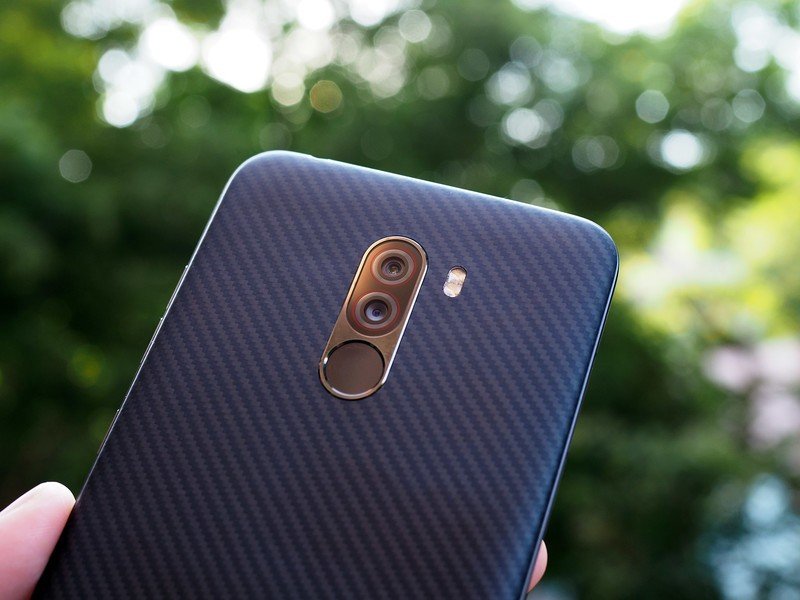

POCO says a glass back increases manufacturing costs and reduces durability, so it went with a polycarbonate chassis that's much more rugged in day-to-day usage. POCO also mentioned that a majority of customers using glass-backed phones opted to put a case on their devices anyway, and that a polycarbonate back negates that purchase. And should you need one, POCO bundles a clear case in the box.
Personally, I've had zero issues with POCO's choice of materials. Sure, the device isn't nearly as premium as the ZenFone 5Z or the OnePlus 6, but it should hold up to daily wear and tear much better. The phone will be available in four options — black, blue, red, and kevlar. The blue and red color options look interesting enough that it makes the F1 stand out, and the Armored Edition with kevlar is in a league of its own.

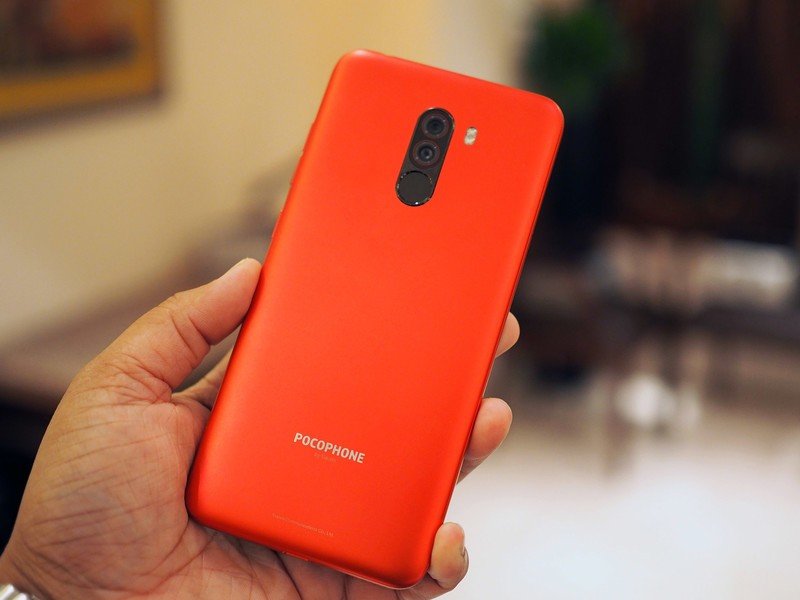

The kevlar option will be exclusive to the 8GB/256GB model, and the pattern will be immediately familiar if you've used OnePlus' Carbon Fiber case. POCO is using DuPont's Kevlar aramid fiber, and the material is wonderfully grippy and doesn't attract smudges. The kevlar edition in particular feels great to hold and use daily, and although the back looks like a removable shell, it isn't. There's no way to switch out back covers, and the battery is non-removable as well.
As you'd imagine for a phone in this segment, the F1's fit and finish is top-notch, and POCO hasn't missed out on any essential features. The F1 comes with a 3.5mm jack that's located at the top, a hybrid SIM card tray with the secondary SIM slot doubling up as a MicroSD slot, and USB-C charging. The power and volume buttons are located on the right, and they offer decent tactile feedback.
The POCO F1 has a sizeable notch at the top of the display, and the cutout holds the earpiece and an IR module that facilitates facial recognition. The speaker is one of the best you'll find at this price point, and the F1 gets loud — playing games and watching videos is a delight on this phone. A major reason for that has to do with the fact that the phone has Dirac HD Sound — a mainstay on Xiaomi phones in the past. The earpiece also doubles up as a secondary speaker.
The POCO F1 features a 6.18-inch FHD+ 19:9 display with a resolution of 2248 x 1080. It also has a layer of Gorilla Glass 3 for protection against tumbles. Xiaomi has been making decent IPS LCD panels in this category for some time now, and the screen on the F1 is identical to that of the Mi 8SE. Colors seem muted out of the box, but you get the option to adjust the contrast levels. Switching to the increased contrast mode made colors much more vibrant, and I had zero issues with reading the contents on the screen under harsh sunlight.
Face unlock on the POCO F1 is incredibly fast.
Another noteworthy feature on the F1 is facial recognition. The phone has a dedicated IR sensor at the front that enables face unlock, and POCO is quoting a time of just 0.1ms. The feature itself is identical to the Mi 8, and with that phone unlikely to debut in global markets, it's great that POCO is bringing the same facial recognition tech to its phone.
POCO said it considered getting rid of the fingerprint sensor because face unlock was so reliable, and this statement holds up in real-world use. The POCO F1's face unlock feature is one of the fastest I've used to date, and it could just take the fight to the OnePlus 6 — and win — in this area. One particular area where it does better is low-light scenarios — the F1 fared much better at recognizing my facial features in the dark.
| Specs | POCO F1 |
|---|---|
| Screen | 6.18-inch FHD+ (2248x1080) IPS LCD |
| Chipset | Snapdragon 845 |
| RAM | 6GB/8GB |
| Storage | 64GB/128GB/256GB |
| Software | Android 8.1 Oreo, MIUI 9.6 |
| Rear Camera 1 | 12MP, ƒ/1.8 |
| Rear Camera 2 | 5MP |
| Front Camera | 20MP, ƒ/2.0 |
| Security | Rear fingerprint, face unlock |
| Battery | 4000mAh |
| Connectivity | Wi-Fi 802.11 ac, BT5.0 |
| Colors | Black, Red, Blue, Kevlar |
| Dimensions | 156 x 75.5 x 9mm |
| Weight | 185g |
| Price | ₹20,999 ($300) |
POCO's main focus is on speed, so it's no surprise that the F1 features the latest hardware available today. The phone is powered by the 10nm Snapdragon 845, and POCO is using the 2.80GHz bin. That's the same chipset we've seen on the OnePlus 6 and ZenFone 5Z, and it delivers blistering performance day in, day out. MIIUI is well-optimized for the platform, and doesn't feel bloated anymore.
The phone also has 6GB of RAM as standard, and comes with an 8GB option as well. To further differentiate the F1, POCO is incorporating liquid cooling in the device, which is designed to boost sustained peak performance times. There's a vapor chamber next to the chipset that siphons heat and dissipates it over a wider area, preventing the phone from overheating during prolonged gaming sessions.
POCO is touting a decrease of up to five degrees Celsius because of liquid cooling, and playing PUBG on the device for over two hours didn't produce an excessive amount of heat. I played a few rounds on the OnePlus 6 as well, and the back heated up considerably more. In that context, the F1 manages its thermals much better.
As for calls, the F1 had zero issues on Airtel and Jio's 4G networks. POCO also worked with Qualcomm on enabling 4G+ on the device, allowing for faster throughput. Dual VoLTE is enabled out of the box as well.
Liquid cooling ensures the F1 doesn't overheat during extended gaming sessions.
With the F1 primarily targeted to gamers, POCO slotted in a 4000mAh battery in the device. As we've seen on the Redmi Note 5 series, a 4000mAh battery and MIUI makes for outstanding battery life, and the F1 outmatches even the Redmi Note 5 in this category.
The Redmi Note 5 and Note 5 Pro are powered by 14nm Snapdragon chipsets, whereas the POCO F1 is running the 10nm Snapdragon 845. The node shift combined with the huge battery means you'll easily get two days' worth of use out of the F1. You'll see anywhere between eight and nine hours of screen-on-time spread out over the course of two weeks, and even after heavy usage on a particularly hot day, I wasn't able to get the battery to go below 30%.
The F1 supports Quick Charge 3.0, and POCO is bundling an 18W charger in the box. It takes just under two hours to charge the device fully, and you'll be able to go from flat to a 50% charge in just under 30 minutes. Honestly, there isn't a single flagship that comes close to the F1 in terms of battery life.
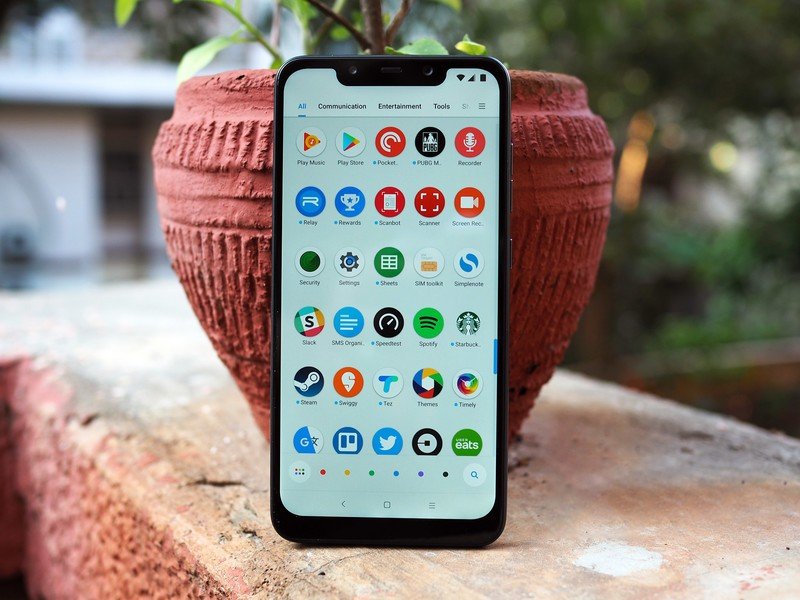
POCO F1 Software
On the software side of things, the POCO F1 is running MIUI 9.6 with a few extra additions. The notable one — and a feature that has been oft-requested by the Mi community — is the app drawer. The F1 comes with an app drawer that's similar to what you'll find on the Pixel 2, and POCO added a few customizations as well. You can access the full list of apps with a swipe up gesture, and there's a shortcut to search apps along with a new sort feature that works surprisingly well.
The feature automatically sorts apps into various categories — Communication, Entertainment, Games, Tools, Lifestyle, and the like — and you have the ability to move the personalize the categories based on your usage. A swipe left gesture lets you go through the selected categories, and the feature comes in handy if you have a ton of apps installed. You're essentially getting a similar functionality as folders, but the process is automatic.
That said, there's no way to add an app to a particular category manually, and that poses its own set of problems. On my unit, games like PUBG and PinOut automatically showed up in the Games folder, but Alto's Odyssey did not. Similarly, Slack showed up in the Finance & Business section and not the Communication category, so it's clear that there's still some work to be done in optimizing the sort function.
The POCO F1 runs MIUI, but you get a launcher and other extras.
There's a secondary sort feature that lets you organize apps by color. You'll see a list of colors at the bottom of the app drawer, and selecting one lists all the apps that prominently feature that hue. When I sorted using the green color, it pulled up the likes of Spotify, WhatsApp, Maps, Starbucks, Uber Eats, and so on. It's definitely an interesting way to sort apps on the phone, but I didn't get much usage out of it in the week I've used the phone.
Another nifty addition is the ability to install third-party icon packs directly from the launcher. There's an option in the settings to do so, and this is also another feature that I was particularly looking for in MIUI for some time.
Aside from that, it's the same MIUI experience as on any other Xiaomi phone. There's enough customization on offer to satiate even the most die-hard fan, and the interface itself doesn't feel bloated anymore. Far from it. If anything, the phone feels as fluid as the OnePlus 6 in the week I've used it.
On the downside, it comes with a ton of bloatware: you get everything from the usual UC Browser, Amazon, and Facebook, to Microsoft apps like Word and Excel, and plenty more. The good news is that all of these apps can be uninstalled.
Oreo for now, but Android 9.0 Pie is coming in under three months.
And because the MIUI experience is never entirely complete without some sort of issue with notifications, the POCO F1 has its share of bugs. This time around, the issue primarily revolved around Newton Mail and Slack — notifications for either app just didn't show up, and I had to manually toggle Autostart for both to receive notifications. I had the same issue in MIUI 9 with Gmail, and to its credit Xiaomi has fixed that particular problem in a subsequent update. That'll likely be the case here as well.
The current MIUI 9.6 stable build (9.6.11.0) is based on Android 8.1 Oreo and has the June 01, 2018 security patch. POCO has mentioned that it will roll out the Android 9.0 Pie update in under three months, with a beta build ready for enterprising users shortly.
The Pie-based build will feature MIUI 10, which has a new notification pane that offers similar functionality to that of the Pixels. The pane in the current MIUI 9.6 build also has a similar white-and-blue aesthetic, and POCO says it will refine the feature-set in the coming months.
And as is the case with all phones running Android 8.1 Oreo out of the box, the POCO F1 offers Treble, and POCO says it will honor the warranty for those users that tinker with custom ROMs. Kernel files for the F1 will be released before the end of the month, and POCO is actively encouraging the modding community to build custom ROMs for the phone.
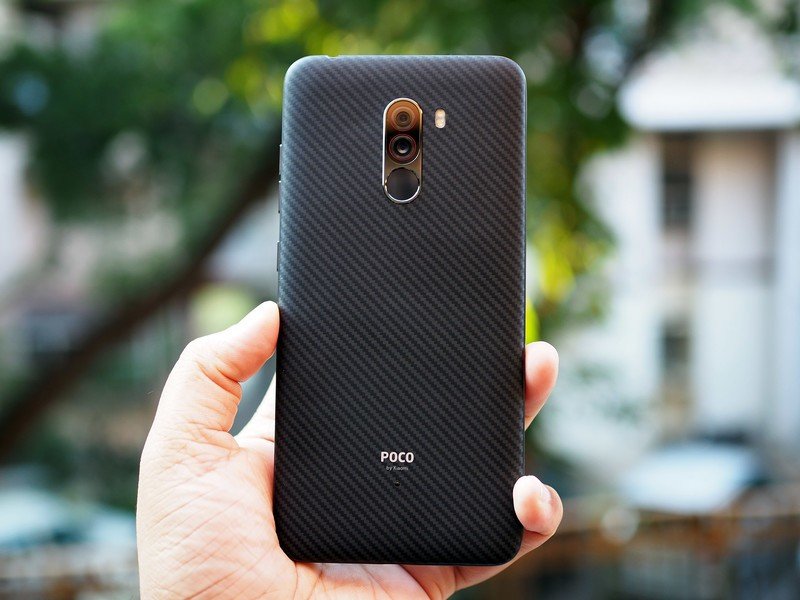
POCO F1 Camera
It should be clear by now that POCO shares a lot of the internal hardware with the likes of the Mi Mix 2S and the Mi 8 series. That continues with the camera as well, with the device featuring a 12MP IMX363 sensor from the Mi Mix 2S and a 5MP secondary shooter. There's EIS to stabilize videos, and a front 20MP f/2.0 camera with portrait mode and pixel binning.
POCO is leveraging Xiaomi's AI scene detection feature, with the AI able to detect over 25 scenes and 1000 scenarios and automatically adjust the shooting mode. The feature isn't as aggressive as that on Huawei/Honor devices, but it does make a difference in a few scenarios.
The camera itself is decent for what the phone costs. Most photos taken in daylight come out with plenty of detail and high dynamic range, but there are a few instances where the images look oversaturated. And while the phone takes decent shots in low-light conditions, it misses out on a lot of details in the background.
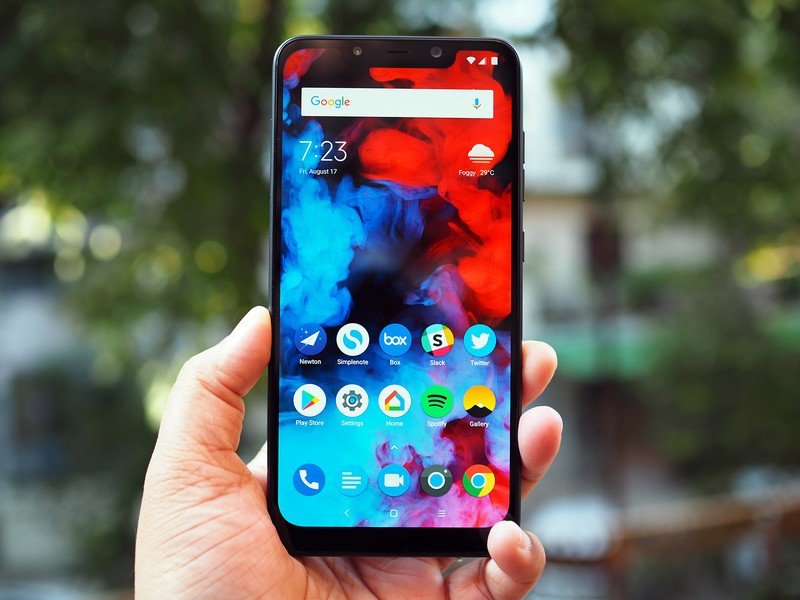
Should you buy it? Absolutely
With the F1, POCO isn't going after the likes of OnePlus 6 or even the ASUS ZenFone 5Z. The price point is more in line with that of the Nokia 7 Plus, and the company is targeting current Redmi Note 5 Pro or Redmi Note 4 users looking for an upgrade.
Considering both devices have sold millions of units over the last two years, there's no shortage of potential customers. POCO is in a win-win situation here: it's starting off with a clean slate that's free from any connotations around brand perception, and at the same time it is able to tap into Xiaomi's supply chain.
The phone itself is superb, offering unmatched value for money in this category. The design won't win any awards, but it is great to use on a day-to-day basis. Battery life is outstanding, as is the performance. MIUI feels much more polished than before, and the introduction of a launcher has eliminated a major point point for customers.
It comes down to how the camera holds up against the likes of the OnePlus 6 and other devices in this segment, but ultimately, you're getting more than your money's worth with the POCO F1.
As for when you'll actually be able to get your hands on one, POCO is set to kick off sales from August 29. The phone will be available in weekly flash sales, but POCO says it will ramp up manufacturing to meet initial demand as the weeks go by.
As for other markets, POCO says it will bring the F1 to over 50 markets in the coming weeks and months.
4.5 out of 5
The POCO F1 once again demonstrates just how cognizant Xiaomi is of the Indian market. By launching a Snapdragon 845-powered device at this price point, Xiaomi is able to effectively shift the conversation away from whether the POCO F1 can hold up to the OnePlus 6 and the ZenFone 5Z.
It's another matter entirely that it manages to do so, but the fact that it costs just ₹20,999 ($300) makes it one of the best options in the market if performance is what you're after.

Harish Jonnalagadda is Android Central's Senior Editor overseeing mobile coverage. In his current role, he leads the site's coverage of Chinese phone brands, networking products, and AV gear. He has been testing phones for over a decade, and has extensive experience in mobile hardware and the global semiconductor industry. Contact him on Twitter at @chunkynerd.






